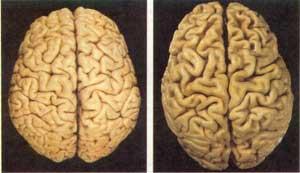Step to early diagnosis of Alzheimer's disease
Neurodegenerative diseases take many years to develop symptoms. Therefore, when the doctor diagnoses the disease it is usually severe. Alzheimer's disease is one of them; the patient may not notice symptoms during the first fifteen years.
Alzheimer's disease currently has no effective treatment, but if it can be detected at the time of its development, this situation could change. Bear in mind that this is a disease of great importance in rich countries, it is said, because in those countries it has been developed by one in ten people over 65 years of age.
However, as it is a disease of rich countries, research is going very fast. It is said that within ten to fifteen years the drug will be found, and it is clear that the company that obtains the patent of the drug will earn a lot of money.

As already indicated, the key to research at this time is the need for a method of diagnosis of the disease in the first steps. Journal of Geriatric Psichiatry has released a project with this objective. Jorge R. Doctors at Barrio University and Gary Small UCLA have prepared a chemical compound that can be a marker on brain positron emission tomography. This substance, called FDDNP, is stored in areas of the brain damaged by the disease. This way these areas can be detected by tomography, even if they are small and do not produce symptoms.
In case of early detection, the patient can perform a treatment that slows degeneration. In the future this early diagnosis method may be part of the usual medical examinations. For the moment, the next objective of the researchers Barrio and Small will be to adapt this methodology to the follow-up of therapeutic drugs.
Buletina
Bidali zure helbide elektronikoa eta jaso asteroko buletina zure sarrera-ontzian










